Emilie Gordenker, director of the Van Gogh Museum in Amsterdam, talks to Thomas Marks about reopening the museum and how it can best serve the public in challenging times.
You joined the Van Gogh Museum on 1 February, and six weeks later the museum was forced to close due to the health crisis. How challenging was it to have just taken the reins as closure started to look inevitable?
When I started, everything was fine. In the first weeks I focused on the people in the museum: I wanted to meet everyone, and managed to meet almost all of them in person. It was important to hear what they thought was going well, where they wanted to see improvement, and to talk to them about the direction of the museum in the coming period. And then at the beginning of March I went to Maastricht for TEFAF art fair, and I remember feeling a strong sense of foreboding – I was avoiding kissing people and so on – and realising that something very serious was about to happen.
The whole management team of the museum came together to watch the Dutch prime minister’s press conference on 12 March, when he said that museums were closing on that day. It was a bit sooner than we’d expected, but that was that. We closed the doors. That’s one of the worst things imaginable in a museum; you’re there to open the doors and share the collection and knowledge about it with visitors.
How far, if at all, has the closure been an opportunity for you to get to know the museum more thoroughly?
Initially there was a period of crisis management. That meant getting everybody working from home but also – since the Van Gogh Museum is the museum in the Netherlands that earns the largest slice of its income not through subsidies – being prepared to lose money disproportionately compared to others. We had to act quickly to put projects on hold and make sure our cash flow was as healthy as it possibly could be.
Of course it’s been pretty awful from beginning to end, and not something that I would ever have wished for. But this period has also thrown into relief what ought to change at the museum. Never waste a good crisis, as you say in the UK – or at least try to make the best of the situation. One example is that over recent years 85 per cent of our visitors have been foreigners and 15 per cent have been Dutch – still a lot when you have 2.2 million visitors a year, but even so there’s a perception that the Van Gogh Museum is for tourists. This is the moment for us to reach out to our Dutch public and so that’s what we’re doing, and we hope that we can lay foundations for long-term relationships with them.
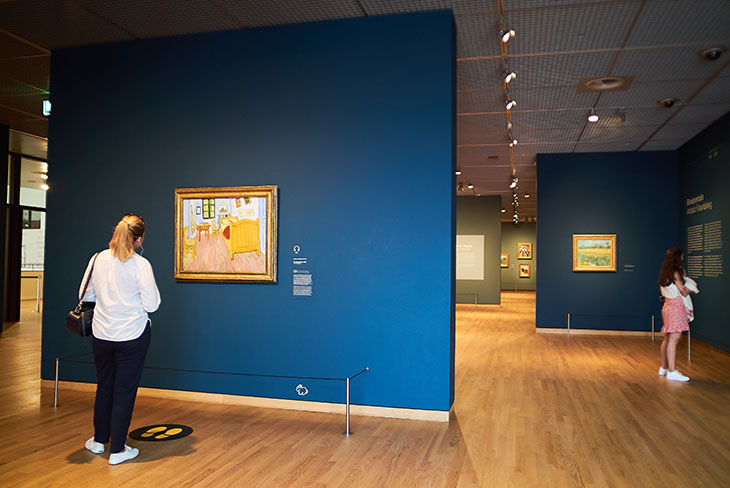
Visitors at the reopened Van Gogh Museum in Amsterdam on 1 June. Photo: Tomek Dersu Aaron
Has your sense of what museums are for, and what they mean to you, changed at all during this period?
It’s reaffirmed the core mission, which is bringing people into contact with wonderful works of art. There’s a real hunger among people to step away from their computer screens, to get out of their houses and do something that will give them a moment to think a little more deeply and enjoy the world again. I can think of no artist who provides that more successfully than Vincent van Gogh. It’s so often said that he offers a sense of comfort and joy – not my words, but what we hear repeatedly from visitors.
At the same time, museums can use this period to reassess how they’ve traditionally done things. A lot of us are having conversations about the future of big, expensive loan shows, for example, and how that relates to what you can do with your own collection. I do think that this is an opportunity to get really creative with what you have in-house.
Have there been any specific logistical challenges in implementing social-distancing measures in the Van Gogh Museum?
We did a lot of work on this in the lead-up to reopening on 1 June – which was a very joyous day! We’ve taken the Dutch government’s guidelines and implemented them, which has meant considering a lot of practical details, from how people show their tickets and what happens at the entrance to whether you can give out multimedia tours safely, what to do with coats and so on.
The most important question was whether we would create a fixed route or let people find their own way through the museum, which to a large extent was answered by the architecture of the building. The spaces in the Van Gogh Museum are predominantly large and open, so we were able to take the decision to let people decide on their route. That also follows the government’s guidelines in giving people their own responsibility to social distance. We’ve had to limit the number of people who can come in; we’re starting out very conservatively with 25 people entering every 15 minutes, which is roughly 10 per cent of the visitors we’d usually welcome during this period. But if it goes well, we hope that we’ll be able to scale up a bit and let more people through the door.
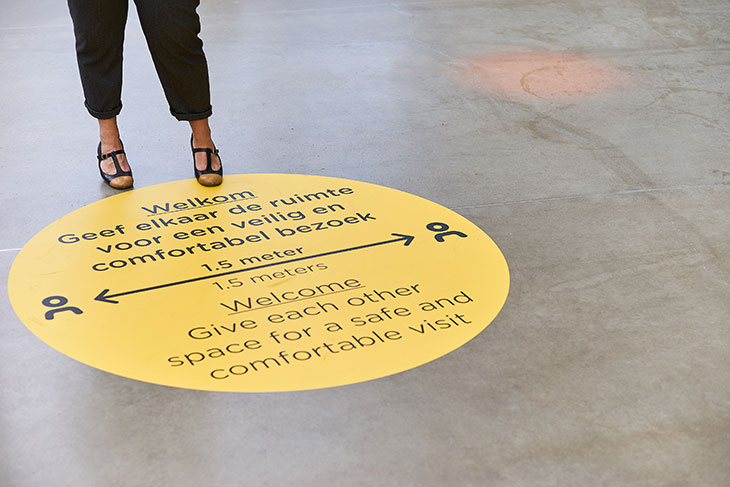
A sign indicating the required distance between visitors at Van Gogh Museum in Amsterdam. Photo: Tomek Dersu Aaron
What are the museum’s priorities in reconnecting with the Dutch public?
We started working on this before the reopening, for example with a competition on social media in which members of the public could nominate other people to have on loan a 3D reproduction of a key painting in the collection. I took the first one to a nurse who works in an intensive care unit. That type of thing really gets people engaged and interacting with the museum. We want to remind people that there’s a lot they can see and do in the museum – that it’s not something they should visit in 20 years, that now is a great moment to come or to come back.
The museum will have taken a financial hit during the period of closure, and limiting visitor numbers in the months to come will cause further reductions in revenue. How damaging has the situation been to the museum’s budget?
We normally generate more than €4 million in a month during this period, so of course that’s a huge blow. We have fairly healthy reserves but any museum taking that type of financial hit would go through its reserves in no time at all if it didn’t take any measures. You have to try to look into the future, but at the same time that’s almost impossible because there’s so much uncertainty: about how the Dutch furlough scheme will evolve, about how the government’s €300 million emergency grant to the Dutch cultural sector will be distributed, about whether social distancing rules will be relaxed or whether there’ll be a second shutdown…
What we are doing is looking at next year and the year after, at where we’re going to put our emphasis, at where we have to continue to invest, and where we can put things off or cancel them. That stretches from exhibitions and acquisitions to maintaining the building and working on digital projects. We’re continuing to spend money on digital development and will launch a new website soon.
At this time, can the digital museum experience come anywhere close to deputising or even supplanting the physical experience?
There’s been no other option during this particular period. I think what the surge in activity has proved is that the investment that many museums have made in this area has really paid off, and made it possible for us to offer things that we wouldn’t have been able to otherwise.
I’ve never thought that the digital experience can replicate what it’s like to be in a museum, but I do believe that digital platforms convey a lot of information, which breaks down barriers and encourages more people to visit. Digital done well builds lasting relationships, too, not only with people who have already visited but with people who haven’t previously been part of the museum’s audience. Many of us are making a transition from the idea of a museum as a broadcaster, as it were, to a place where we’re having active conversations about all kinds of issues – and that’s what we really want to be.
Besides the Van Gogh Museum, which museum are you most looking forward to visiting when that becomes possible?
I’m torn! I’d love to go to Nuenen, where Van Gogh lived in the 1880s: I’ve never been there and had plans to visit with one of my curators as part of my education. But I also really want to go back to the Mauritshuis, which of course I miss [after being its director]. Let’s put the priority on Van Gogh for now…
Unlimited access from just $16 every 3 months
Subscribe to get unlimited and exclusive access to the top art stories, interviews and exhibition reviews.

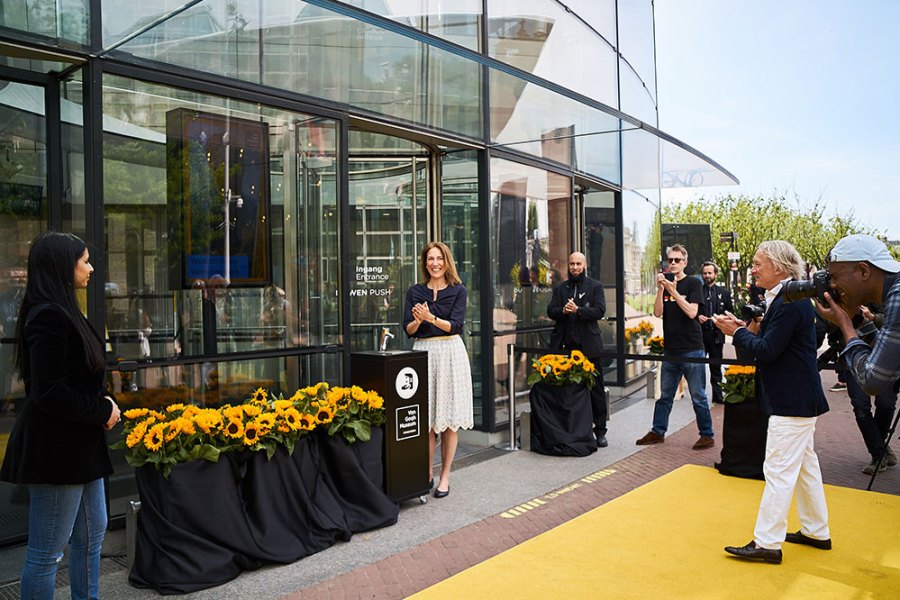
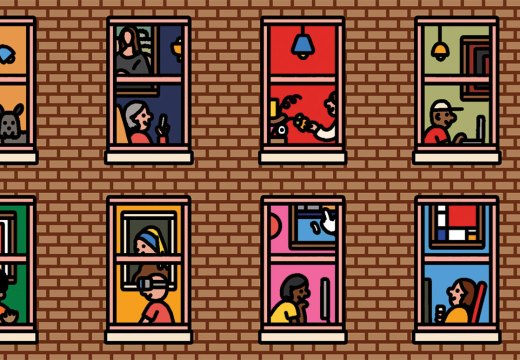
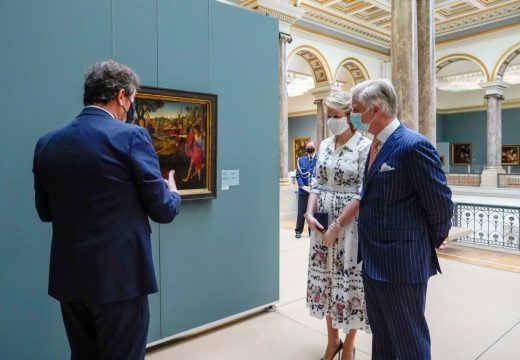
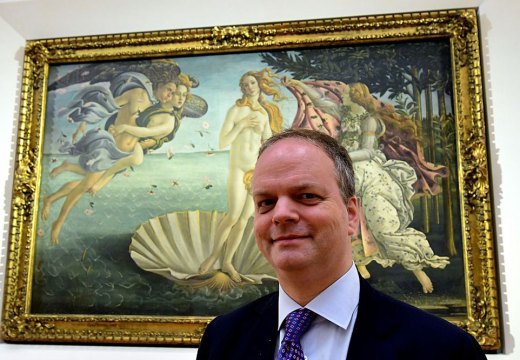









![Masterpiece [Re]discovery 2022. Photo: Ben Fisher Photography, courtesy of Masterpiece London](http://www.apollo-magazine.com/wp-content/uploads/2022/07/MPL2022_4263.jpg)
Has the Fitzwilliam lost the hang of things?